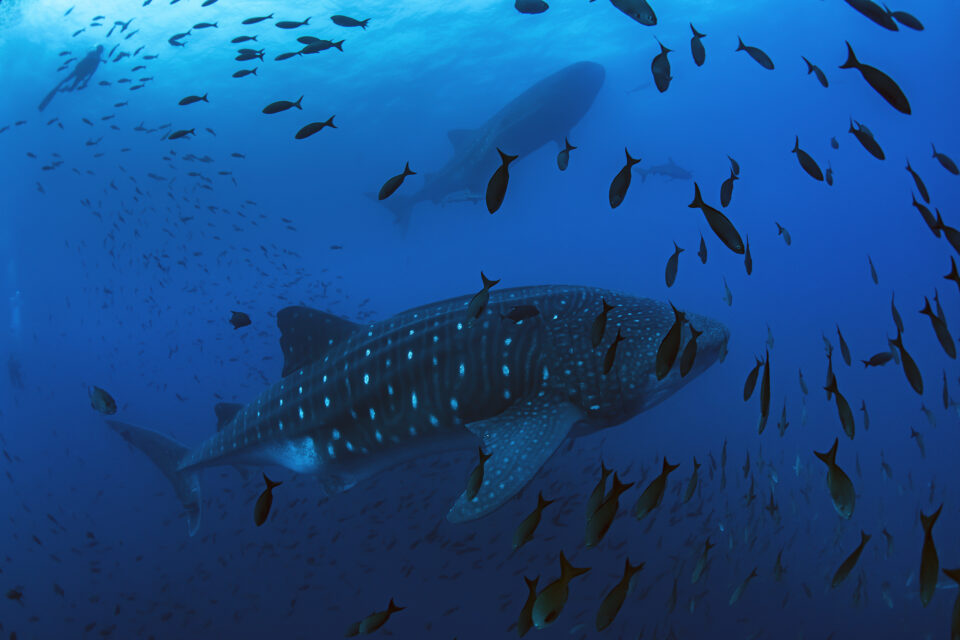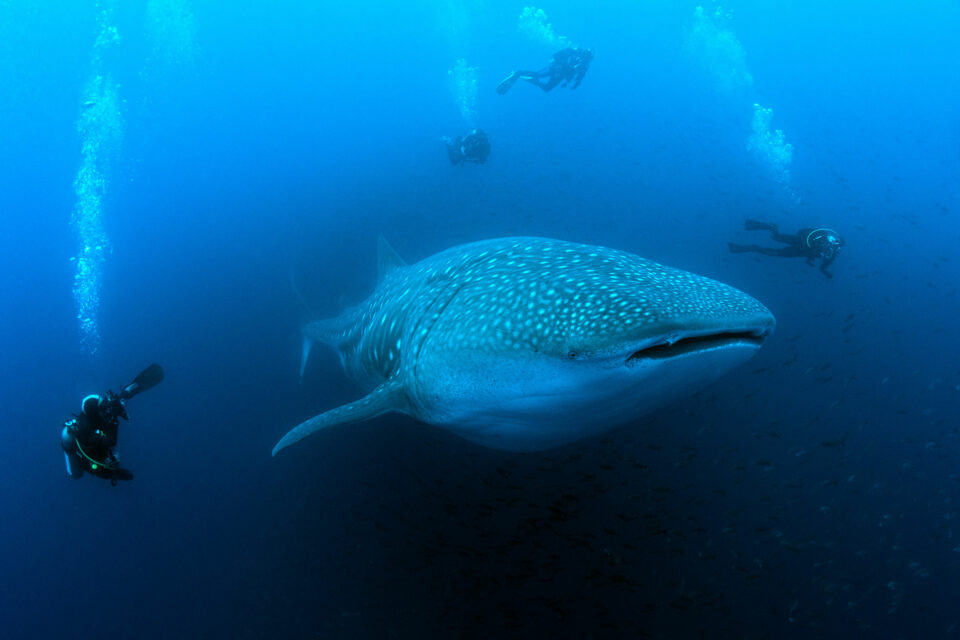
Galapagos Whale Shark Project – Updates
The Galapagos Marine Reserve (GMR) is a large area of the northeast Pacific, which provides protection to a diverse and thriving marine ecosystem, including the world’s largest fish, the whale shark.
The Galapagos Marine Reserve (GMR) is a large area of the northeast Pacific, which provides protection to a diverse and thriving marine ecosystem, including the world’s largest fish, the whale shark.
Whale sharks are found in high numbers in the GMR and interestingly, they are mainly female and many of which appear pregnant. The Galapagos Whale Shark Project (GWSP) was set up in 2011 to try to solve some of the mysteries surrounding these gigantic fish. Important questions include why they come to Galapagos, how long they stay in the area, what is the frequency with which they return, and what are important sites for feeding, breeding and birthing? Understanding more about their behaviour will help inform conservation policies in order to protect these ocean giants.
Tagging ocean giants

Fin mounted tags © Galapagos Whale Shark Project
In 2019 another research trip took place to tag the sharks and track their movements. Each shark was tagged using a new type of tag that is clamped over the dorsal fin, reducing stress compared to other styles, which are attached to the fin itself. These tags transmit real-time GPS data and stores information on how deep they travel and for how long, to build up an accurate profile of diving behaviour. Four new “deep” tags have been deployed, which could provide information at depths of up to 6000m, almost triple the current depth of 2000m. Environmental conditions were optimal for this trip and the team had a 100% transmission rate from all the tags, completing the tagging phase of the trip within five days. One whale shark, “Hope” has already travelled over 3000nm and the team plan to retrieve her tag in early 2020, revealing the mysteries of how deep she has been diving and for how long.

“Hope” the whale shark has already travelled over 3000nm © Galapagos Whale Shark Project
Blood analysis
Blood samples were taken from sharks on both the pectoral and pelvic fins. Like in 2018, some immediate tests were carried out to assess the overall health of the sharks. Later tests were carried out to assess the levels of three hormones: testosterone, progesterone and oestrogen. Similar conclusions to 2018 were drawn – the sharks are in good physical health but hormone levels were inconclusive, ruling out accurate pregnancy readings.
The next stage of the project will look to draw blood at different times of the year to advance our understanding of sex hormones in whale sharks throughout the year. The hope is that this will further our understanding of how their reproductive systems work. As a result, the next research trip is planned for the end of June-July 2020, two months earlier than previous trips, for comparison with previous seasons.
Identifying whale sharks
During 2019, 33 whale sharks were photographed and the data submitted to the global database Wildbook for Whale Sharks. Photo identification is a powerful tool to study whether they return to the same sites, how long they stay in the GMR and the frequency with which they return. In total over 550 individual whale sharks have been identified!

Unique spot and stripe patterns on a whale shark © Simon Pierce
This year’s trip was very successful, but the next trip to the GMR is an exciting prospect given new tags are being researched and blood sampling methods tested. Therefore, please continue to donate to GCT so we can be more enlightened by the movements and behaviour of these huge curious fish!
Ways to get involved
Please donate to GCT and support projects like our Endangered Sharks of Galapagos programme, which aims to protect whale sharks and other species within and outside of the GMR. Or why not purchase one of our whale shark t-shirts or jumpers? Alternatively, you could become a GCT member to continue to support long term and receive our biannual magazine.
Related articles

Ocean Protection Webinar 2023

Tagging a new constellation of whale sharks


